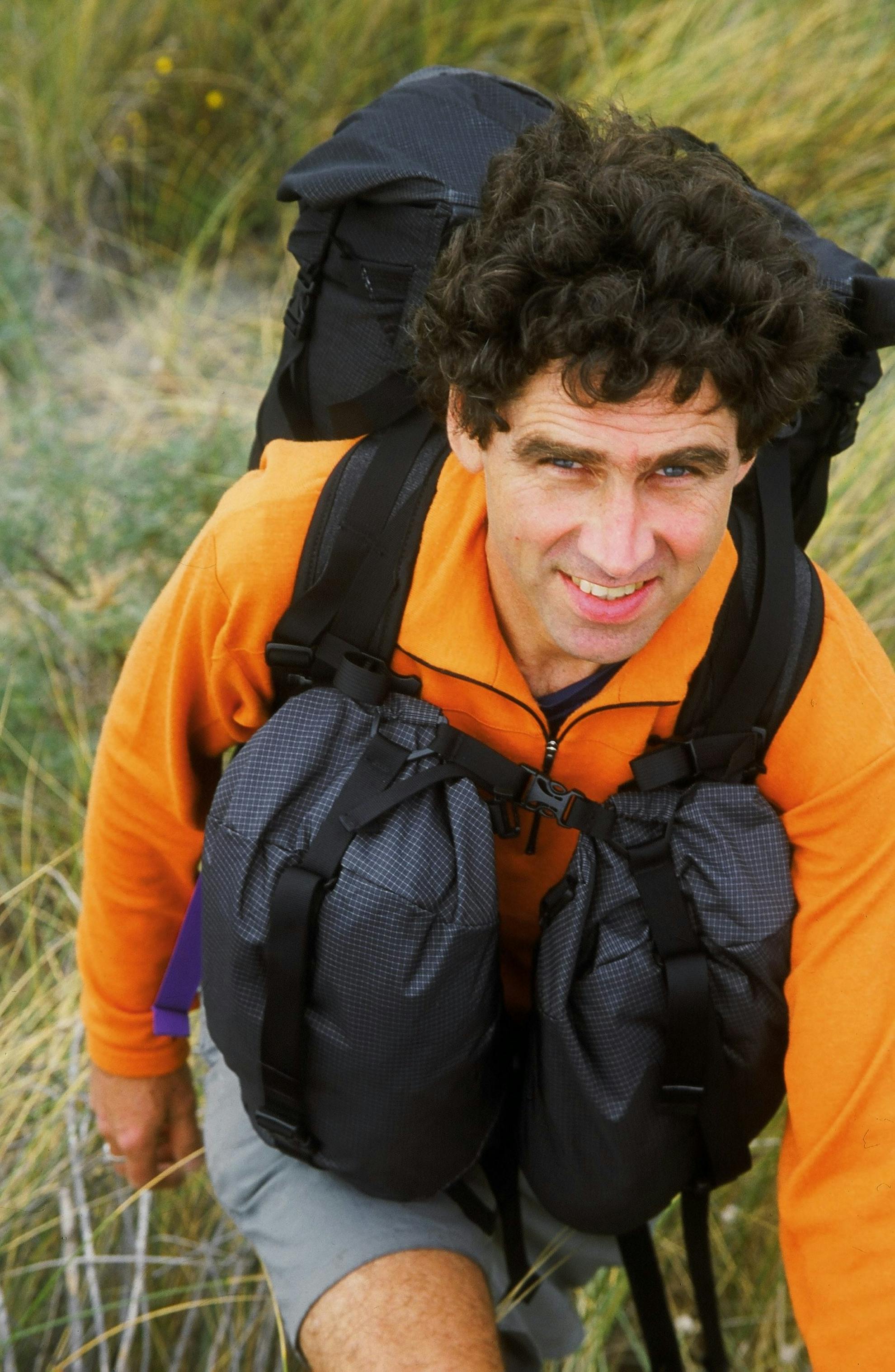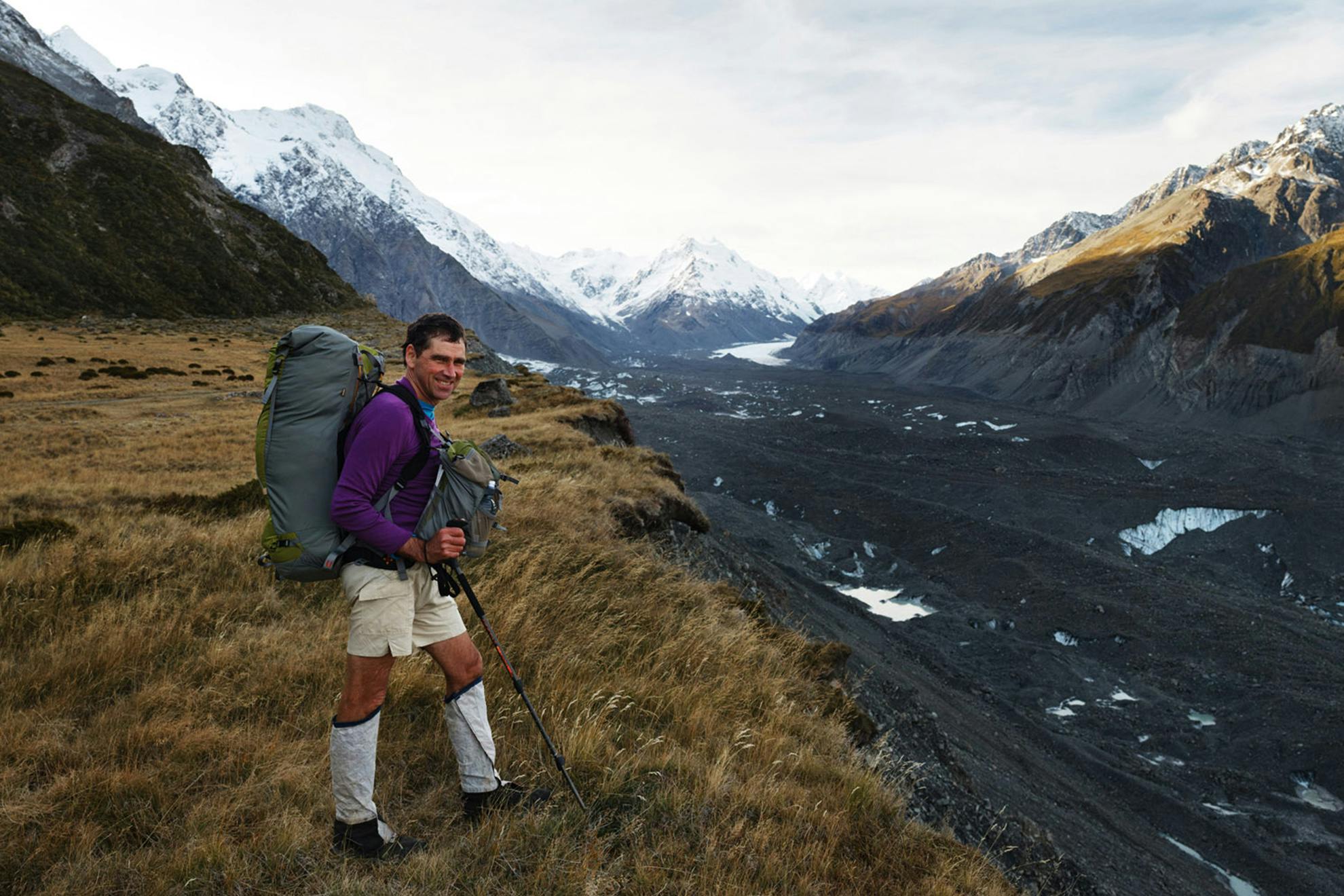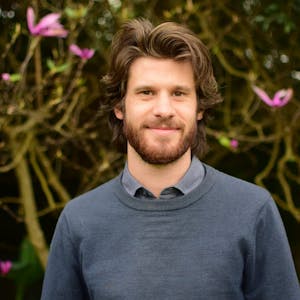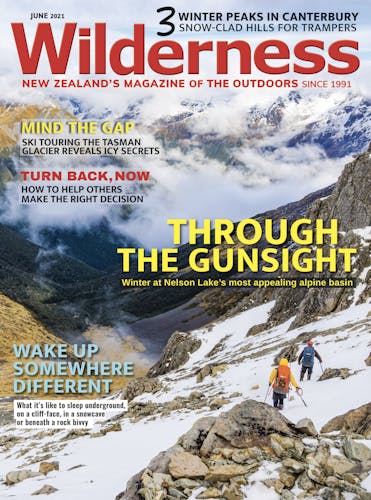Aarn Tate developed cutting edge outdoor gear for some of the world’s top brands. Now he has sold his revolutionary pack brand – Aarn Packs – and reflects on his life-long mission to make gear better.
Aarn Tate can’t stop solving problems. Fortunately, when he started his career in the early 1970s there were a lot of problems to solve.
For nearly 50 years, Tate has been driven by one fixation: to make outdoor gear better. That mission has taken him around the world, helping to change the way thousands of people experience the outdoors and how they carry their gear.
“It became a passion and started a career which I never expected,” Tate says.
That passion started in Australia, where Tate grew up and discovered a love for tramping while studying at the University of Sydney.
“I studied biology,” he says. “I didn’t enjoy working in the laboratory and the actual analysis seemed like a waste of time to me, but what I enjoyed was being out in nature.”
He joined the university’s mountaineering club – incidentally, alongside Kathmandu founder Jan Cameron – and began exploring the rugged terrain of south-west Tasmania. But he soon realised that the outdoor gear of the time “wasn’t very good”. The problem-solving began.
“At the time, packs were more like a lump on your back with a fixed harness and no hipbelt and there were only A-frame tents. It was pretty unsophisticated,” Tate says. “So I started designing because I thought I could make something better for myself.”
Looking at new gear being developed overseas, Tate began creating Frankenstein packs on a sewing machine at home, trying to combine the best features to make entirely new products. The son of an architect and an artist, it was like he was genetically predisposed to the work – the combination of creativity and practical design.
“My strength was I kept coming up with ideas, and I had to try them,” he says. “I had a little sewing machine, so I’d sew them up and get out there and see what worked. Most didn’t work particularly well the first time. Some of them didn’t work at all. But some worked well enough to develop and go further. It kept evolving from there.”
The first trail test of his homemade packs was on a trip to New Zealand in 1973, sparking a lifelong passion for Aotearoa and the Southern Alps. After a year testing his packs and exploring the country, he went back to Australia and, with little experience and no design qualifications, landed a job designing for Australian outdoor retailer Paddy Pallin. There he established his design credentials, designing what he says was probably the first tunnel tent in the Southern Hemisphere, and creating new baffled down sleeping bags.
“I seemed to have an aptitude for it and there weren’t many people with outdoor design experience then, because the gear had been much the same for a long time. When someone came along with a few new ideas, they gave me a go.”
After just a year with Paddy Pallin, Tate moved to New Zealand and worked as a freelance designer, creating the Altimate series of tunnel tents for Fairydown, and designing packs for Antarctic Products and Macpac. He went on to design for Vango in Scotland, where he developed tents and backpacks with features that were adopted industry-wide and won multiple design awards. The work would take him from the UK to the US and Japan over the following 15 years.

Over time, packs became his main focus.
“It’s because they are the most complex item,” Tate says. “They have to fit on your body, but the body’s moving all the time, and they have to carry a load. It’s much more complex than designing a tent. Pack design also hadn’t addressed the issues around posture and movement. There was a lot of room for development.”
A pivotal moment came in 1989 when he developed the idea to redistribute a pack’s weight by wearing smaller front packs, a move that would define Tate’s work for the next 30 years.
“If you look at a backpack, the first thing it does is affect your posture,” he says. “You have to lean forward quite extensively to balance the load. So I started to develop the basic principles for a comfortable load carrying system, one that affects your body as little as possible and that doesn’t alter your posture or hinder your movement. It would be like a mirror image of your body shape as it moves.”
Tate developed his signature front packs and a new harness and suspension system to redistribute the pack’s weight to reduce the forces on the body. The problem was he couldn’t get his clients to adopt the system.
“To market it as a new system, companies would have to say that what they’d been previously doing was flawed and out of date. Manufacturers weren’t going to risk their whole range of packs to market a new idea.
“Another reason was that you look different wearing a front pack and there’s resistance to that.”
Tate was able to introduce some of his concepts for British outdoor clothing company Craghoppers in the mid-1990s and they soon won a number of awards, but the line of packs was later abandoned when foot and mouth disease decimated the outdoor industry in the UK.
When Tate returned to New Zealand in 1999, he found himself unemployable – companies wouldn’t hire him as a designer when he had existing licensing agreements with companies overseas. So he decided he would do it himself: start his own company and finally put his concepts into practise.
Aarn Packs launched in 2002 and began selling worldwide. While he says the market took some convincing of the concept, word about the benefits of the packs travelled and his packs developed a cult-like following.
“We got some wonderful testimonials from some very experienced users, especially from older people who had stopped tramping and said with the packs, they’d gained another 15 years of carrying a load.
“The feedback has always kept us going. When we’d have a crisis we’d get a testimonial saying ‘your packs have saved my tramping life’ and that really helped us.
“But there was also feedback from people who got a lot of comments about their appearance – people calling them boob bags. For some, it was a bit of a joke. But there’s always early adopters and always sceptics. Experienced trampers knew that if you can balance a load, it’s going to be easier on your body.”
Now, after 19 years running the business, Tate and his wife and business partner Devi Benson have sold their company to Christchurch-based retailer Further Faster.
“Devi is 73 and I’m 71 and with just two of us running an international business, it’s very time-consuming.
“It feels great. Now I can enjoy the gear I’ve spent so long designing.”
Tate hopes Further Faster can take the company to the next level.
“The reason we were never able to grow was because of cash flow – we’d have so much tied up in stock due to minimum order requirements. Unless we had a big capital injection we couldn’t grow and I never wanted to risk other people’s money.”
Tate says there are still a few unfinished projects he wants to see through – principally a new design for hiking poles and child carriers. Will he ever be able to turn off that designing brain?
“I hope one day, yes. I’d like to relax, but when I see a problem and my mind comes up with a solution, it’s hard to stop.”








